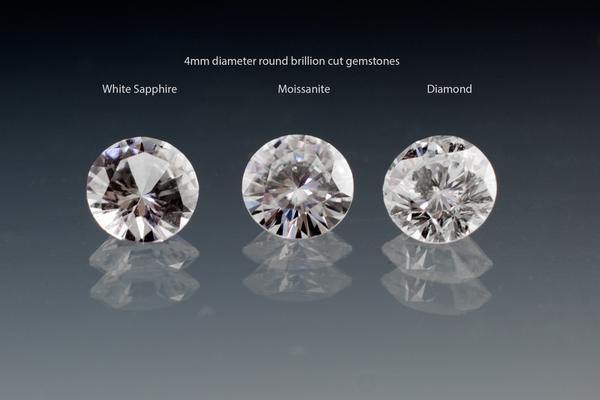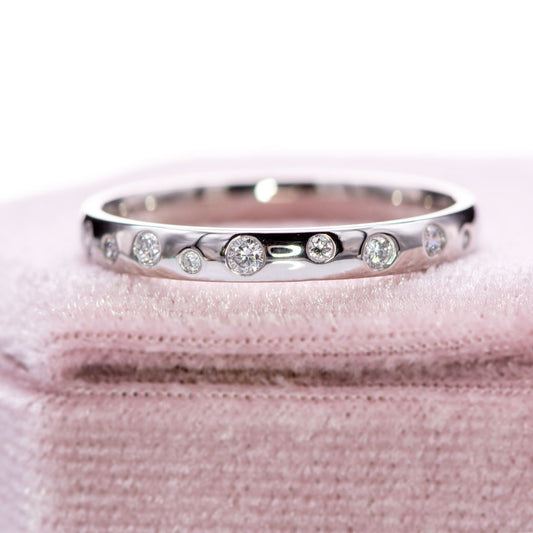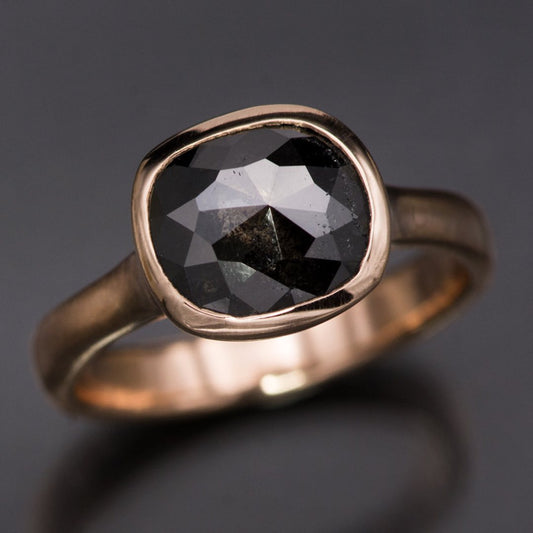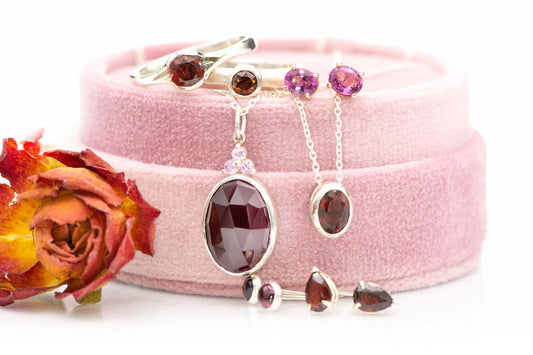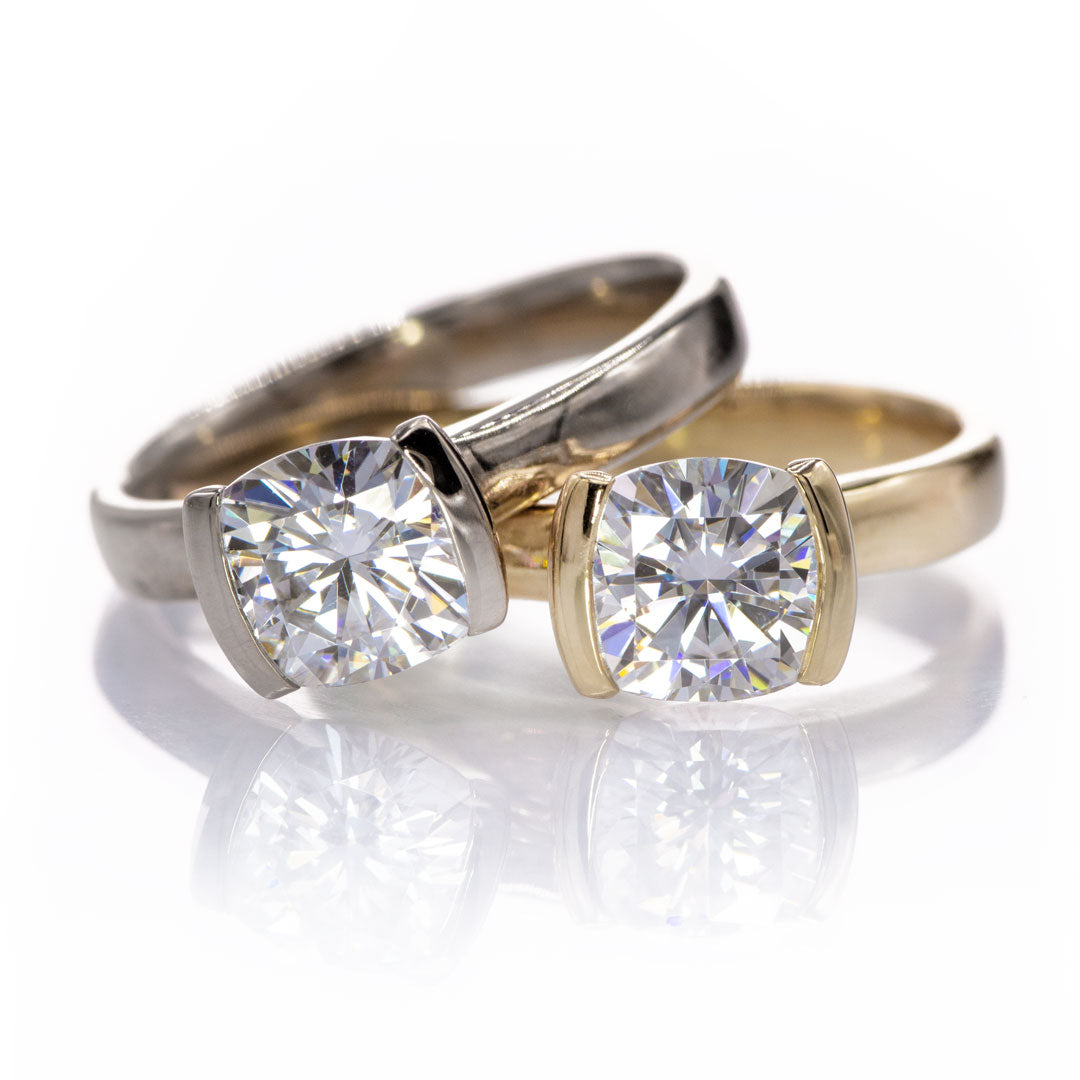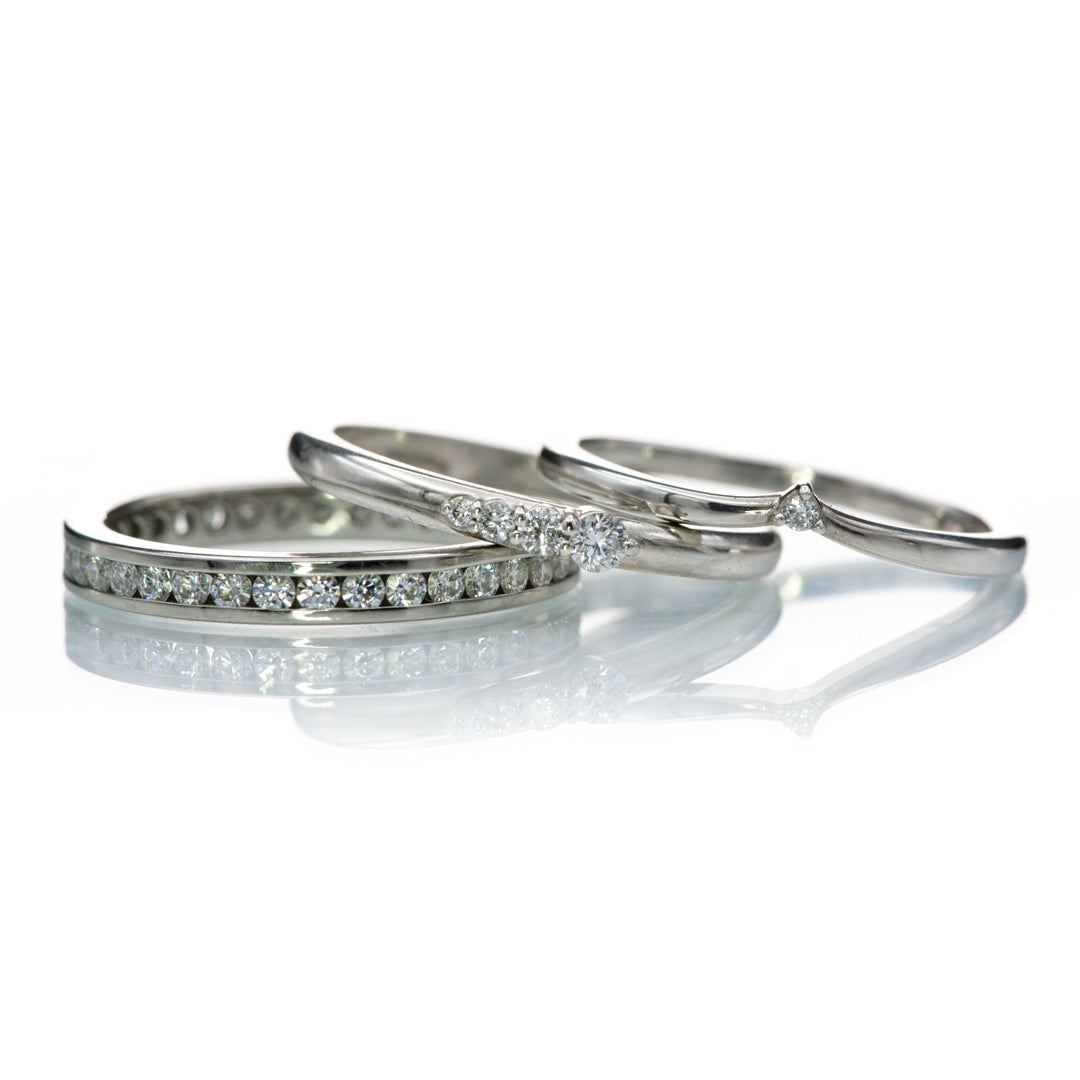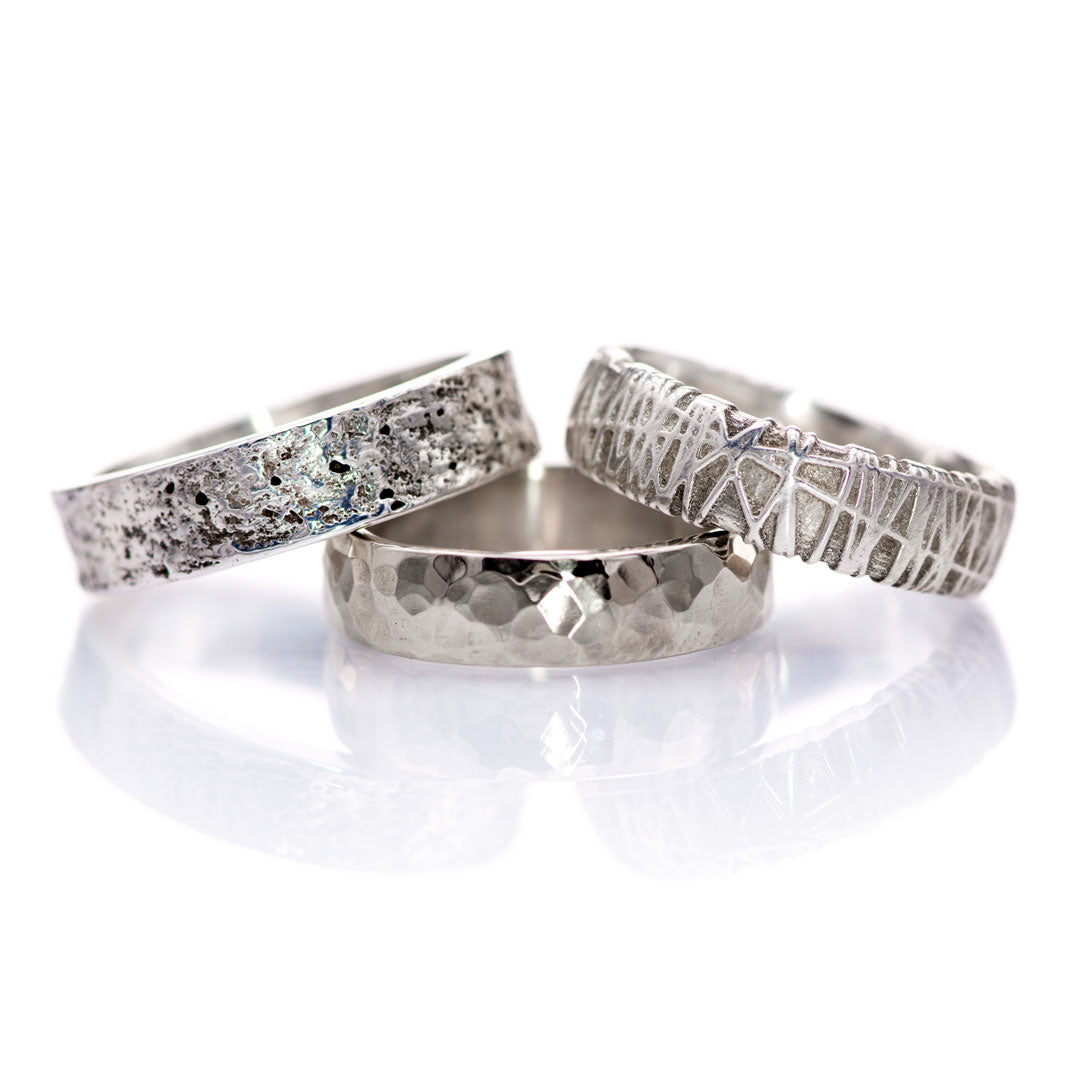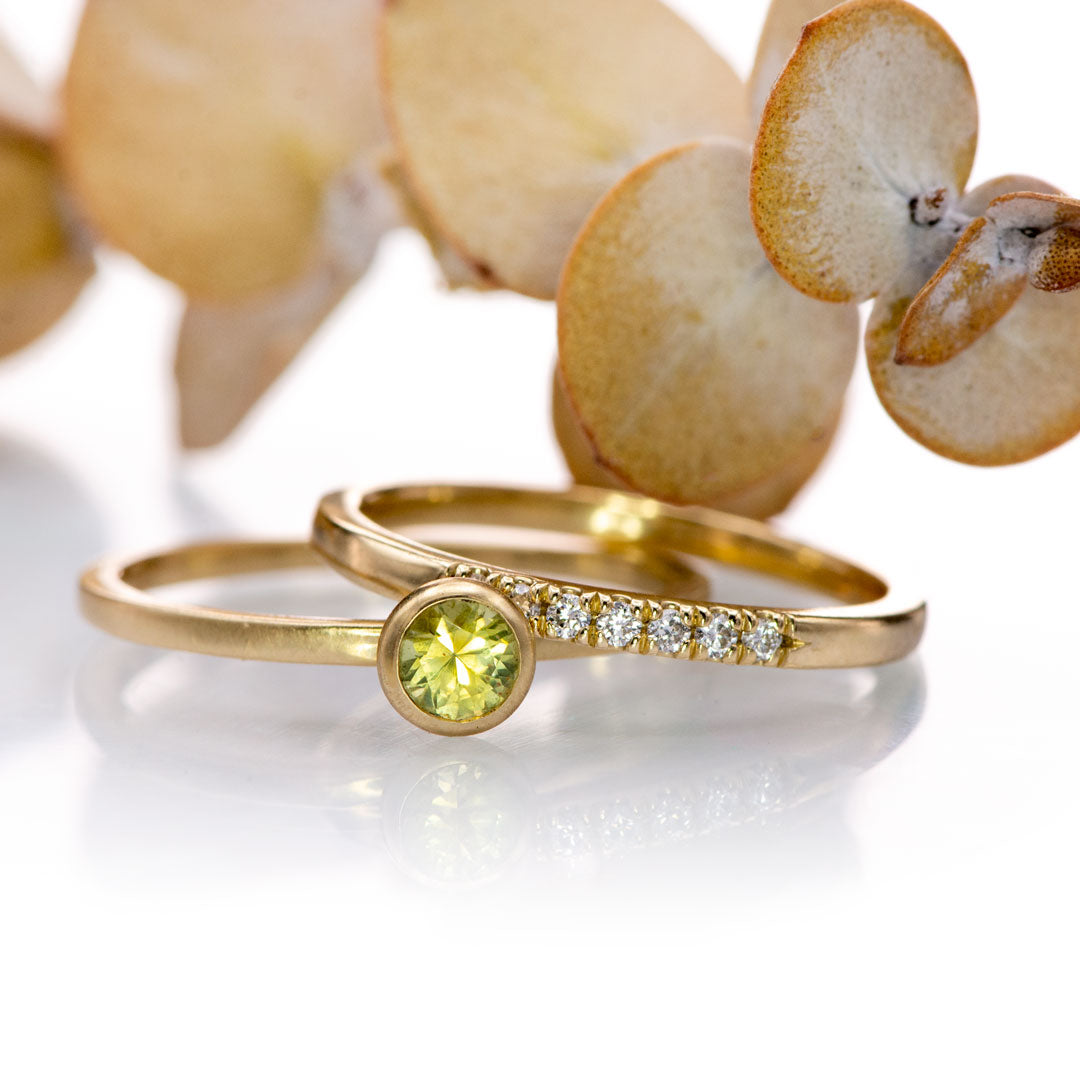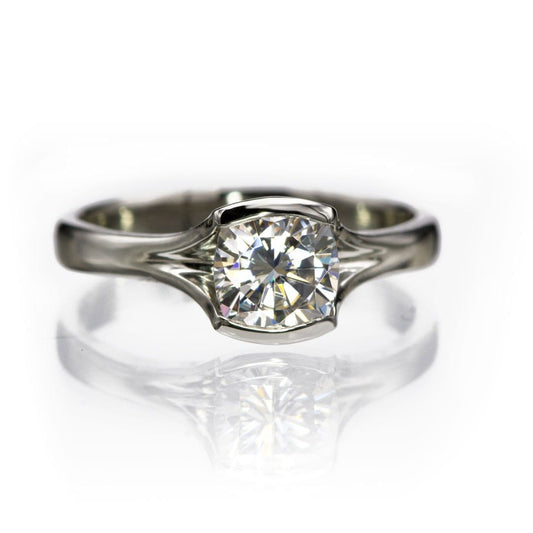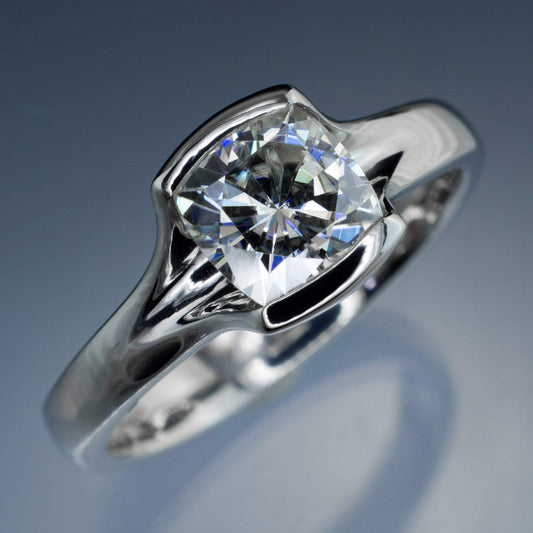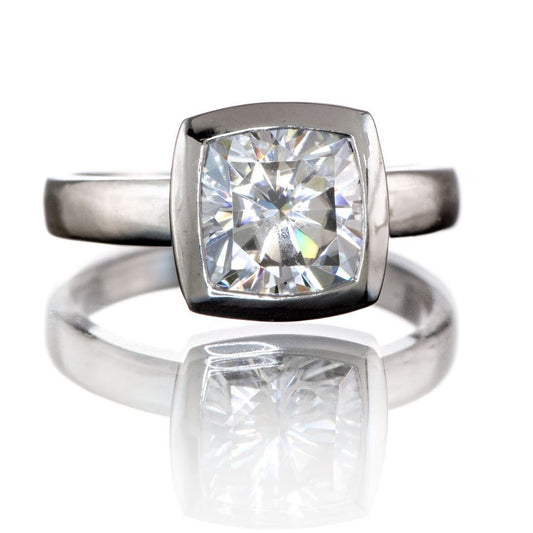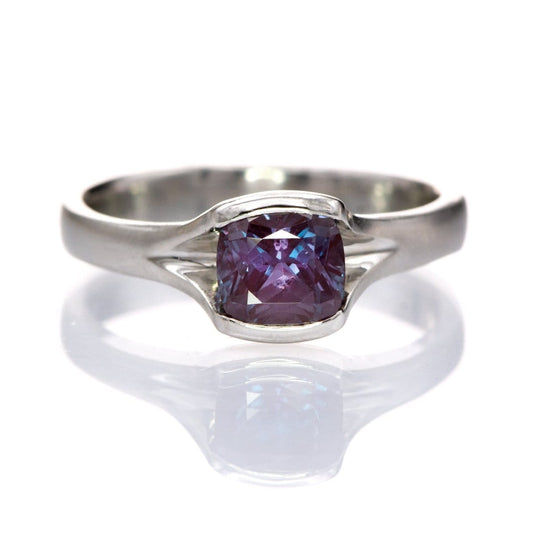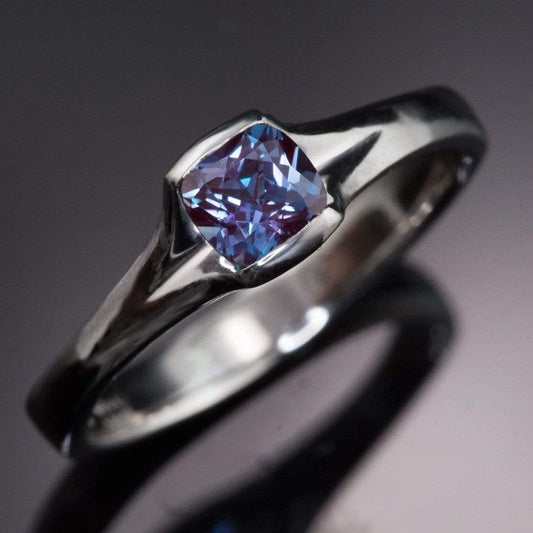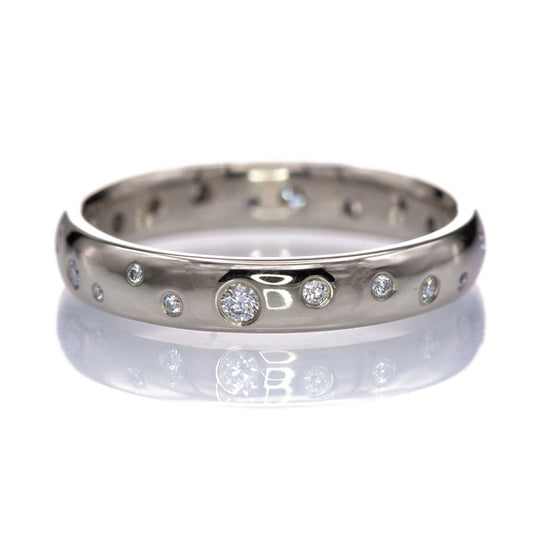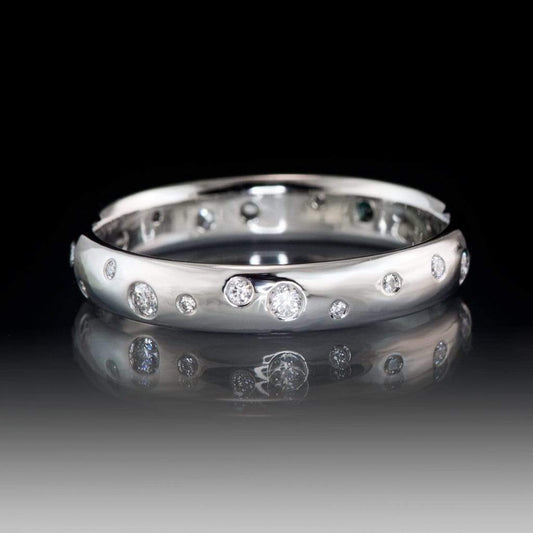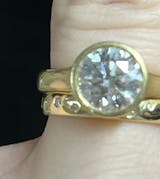If you are looking for an engagement ring with a colorless center stone, you don't only have diamonds to choose from. There are other durable and often more sustainable gemstone options like moissanites and white sapphires available. They provide a great and often more affordable alternative to diamonds. White sapphire, moissanite, and diamonds are three gemstones that are often compared due to their striking similarities. Each gemstone possesses its own unique characteristics that make it stand out in the world of jewelry. In this article, we will delve into the basics of these gemstones, explore their formation process, compare their physical properties, and touch upon the ethical considerations surrounding their production. Let's look at the differences between white sapphires, moissanites, and diamonds in more detail.
Understanding the Basics: White Sapphire, Moissanite, and Diamonds
Defining White Sapphire
White sapphire is a type of corundum, just like the renowned blue sapphire. With its exceptional hardness and enchanting brilliance, white sapphire has become a popular alternative to diamonds for engagement rings and other jewelry pieces. White sapphire's timeless beauty and affordability make it an attractive choice.
Where does the color or absence of color come from?
Chemically speaking white sapphires are corundum gem material - same as blue sapphires and rubies. It's the trace elements in the corundum that give each their specific color hue. Rubies get their color from chromium inclusions in the corundum, while the blue color in blue sapphires comes from iron and titanium. If there are no trace elements in the corundum material, it's colorless and called white sapphire. Similar to colorless diamonds, white sapphire can still have some slight yellow, blue or pink undertones if there are minimal trace elements in the stone.
White sapphire, with its pure and pristine appearance, symbolizes purity and wisdom. Its colorless nature allows it to effortlessly blend with any outfit or occasion, making it a versatile gemstone for everyday wear or special events. The durability of white sapphire also ensures that it can withstand the test of time, making it a perfect choice for heirloom jewelry.
Tulip Engagement Ring in Platinum with a white sapphire. The ring design is also available with moissanites or diamonds.
What is Moissanite?
Moissanite is a rare gemstone that was initially discovered in a meteor crater. This unique gemstone is favored for its exceptional brilliance and fire, which rivals that of diamonds. Created in a laboratory environment, moissanite remains an ethical and sustainable choice for those seeking a dazzling and cost-effective alternative to diamonds.
Moissanites and diamonds are chemically different minerals than sapphires. While sapphire corundum is aluminum oxide, moissanites are silicon carbide (SiC), a very rare, naturally occurring mineral found primarily in meteors. Commercially available moissanite is always lab-created. In the last years moissanites have made a huge improvement and in addition to the near-colorless moissanites there are now truly colorless moissanite options available that get a color grading similar to a D to F color Diamond. Its remarkable brilliance and fire are a result of its high refractive index, which allows it to reflect light with incredible intensity.
Until recently the only moissanites sold n the US were made by Charles & Colvard, the original maker of moissanites based in North Carolina. Their patent expired in 2015 prompting new moissanite makers to bring out their own moissanite innovations. In addition to the Forever One moissanites by Charles & Colvard I am occasionally also offering Supernova™ moissanites by Moissanite International made in Australia and Stuller moissanites made in the US. They are colorless to near-colorless moissanites similar to the Forever One™ by Charles & Colvard, but run slightly cheaper than the Forever One Moissanites.
Charles & Colvard's Forever Classics were the original moissanites with a J-K color grading. In my option their warm color nuance looks great in colored metals like yellow and rose gold. Forever Classic and Forever Brilliant moissanites are discontinued and current stock only available until it sells out. The newest colorless Forever One Moissanite with a color grading of D to F was introduced in 2015. Since the beginning of 2017, Forever One moissanites are being made available in 2 grades: a near-colorless GHI grading and a colorless DEF graded one.

Metal color also has an influence how the color of the stone is perceived. In a rose gold or yellow gold ring, any moissanite, white sapphire or diamond will look a warmer color since the color of the gold is reflected into the gemstone's color.
Cushion-Cut Forever Classic and Forever Brilliant Moissanite Fold Semi-Bezel Set Solitaire Engagement Ring. Ring design is also available with cushion cut diamonds.
With a platinum (or palladium) ring a colorless Forever One probably looks best, though you won't be disappointed with near-colorless moissanite either. In a white gold ring, either one works. The Palladium white gold has a slightly warm tone to it anyways.

Princess cut white sapphire (left) vs. Standard Forever Classic Moissanite (middle) vs Forever Brilliant Moissanite (right)
One of the key advantages of moissanite is its affordability compared to diamonds. While diamonds are known for their high price tag, moissanite offers a more budget-friendly option without compromising on beauty and quality. Additionally, moissanite is a sustainable choice, as it is created in a controlled laboratory environment, reducing the environmental impact associated with mining.
Cushion Cut Diamond Bezel Set Solitaire Engagement Ring. Ring design also available with a square cushion cut moissanite.
The Classic Diamond
Known as the king of gemstones, diamonds come with an unmistakable allure. Their natural beauty, exceptional brilliance, and status symbol have made them the traditional choice for engagement rings. While diamonds are unparalleled in their brilliance, they also come with a higher price tag due to their rarity and demand.
Diamonds have a rich history that dates back thousands of years. They were first discovered in India and were highly valued for their beauty and rarity. Throughout history, diamonds have been associated with power, wealth, and eternal love. The tradition of giving diamond engagement rings can be traced back to ancient Rome, where they were believed to symbolize commitment and fidelity.
One of the unique characteristics of diamonds is their ability to refract light, creating a mesmerizing play of colors known as "fire." This optical property, combined with their exceptional hardness, makes diamonds one of the most durable gemstones available. The rarity and durability of diamonds contribute to their enduring popularity and status as a symbol of everlasting love.
Diamond Color
Diamonds are carbon formed under immense pressure in the earth. Diamonds are the only gem made of only one element. They are 99.95% pure carbon. The tiny amount of non-carbon trace elements can influence the color of the diamond. Natural diamonds can come in colorless to yellow, brown, blue, pink, grays and black. The saturation of color or no color does have a huge influence on the price of a diamond. White diamonds are graded on a scale from the highest and most expensive D- colorless to a Z which would be a light yellow or brown diamond. Fancy color diamonds are stones that show a yellow or brown tone with more color than a Z master stone or are a color other than yellow or brown, like blue, pink, greenish, black or gray. In those the value increases as the color deepens.

The Formation Process of Each Gemstone
How White Sapphires are Formed
White sapphires form deep within the Earth's crust under intense heat and pressure. During the formation process, various impurities, such as titanium and iron, give sapphires their distinctive colors. The white variety, however, lacks these impurities, resulting in a clear and colorless gemstone with excellent brilliance.
The Creation of Moissanite
Moissanite, on the other hand, is created in the lab using advanced technology. It is made from silicon carbide, a compound found abundantly in nature. Through a complex and meticulous process, scientists are able to recreate the conditions that lead to moissanite's formation, resulting in gem-quality stones that possess exceptional fire and brilliance.
The Making of Diamonds
Diamonds undergo an extensive geological journey that spans millions of years. Formed deep within the Earth's mantle, diamonds are brought to the surface naturally through volcanic eruptions. These precious gemstones are formed when carbon atoms are subjected to intense heat and pressure, causing them to crystallize. This natural process ensures that each diamond is unique, with its own individual characteristics. However, due to advancements in science and technology diamonds can also created in a lab just like moissanites. Lab-Grown Diamonds are not simulants, they have the same properties that a mined diamond has. The only difference is that scientists create them in a lab. They start with rough crystals and are grown using either HPHT (High Pressure High Temperature) or CVD (Chemical Vapor Deposition) — sometimes both methods. Lab-Grown Diamonds can cost 30-50% less than Natural Diamonds.Physical Properties Comparison
How do diamonds, moissanite and white sapphires visually compare?
If you are looking for an eye-catching sparkly gemstone, a diamond or moissanite will be your best bet. They are both brilliant and very sparkly. A white sapphire can be quite sparkly too depending how well it's cut, but it just does not have the same fire and dispersion a diamond and especially a moissanite has. For some people, that's exactly the appeal of a white sapphire as they want a more understated look.
If a diamond look-a-like is the goal, I would recommend choosing a round brilliant cut moissanite. Many of the fancy cut moissanites like cushions, pear, trillion, or ovals have a slightly different facet design than a diamond of the same shape and are more easily detected as not being diamond. The new generation of moissanites has come a long way from the early moissanite on the market some 10-15 years ago.
A 5mm square cushion cut moissanite vs a larger 7x5mm lab created white sapphire.
Comparing Hardness and Durability
Diamonds, moissanites and sapphires are all great choices for every day wear jewelry like an engagement or wedding ring.
Diamond is the hardest natural material. On the Mohs hardness scale a diamond is a perfet 10, it does not get any better than that. Moissanite scores a 9.25 and sapphire is a 9. But since this scale is not linear, the difference between a 9 and 10 actually means that diamonds are 3 to 4 times harder than sapphires. Hardness is a measure of resistance to scratching and abrasion between minerals. So a diamond can easily scratch a moissanite or sapphire, a moissanite can still scratch a sapphire. Only a diamond can scratch another diamond. Abrasion after many years of daily wear is fairly likely to occur on a sapphire engagement ring but seldom on a diamond ring.
But hardness often comes with one drawback, it makes a material more brittle. Due to their crystalline structure, diamonds can chip. Diamonds have 4 perfect cleavage planes where breakage can occur. Moissanites are somewhat brittle too, although breakage usually results from very thin cut gems. Sapphires, on the other hand, have an excellent toughness. Toughness indicates the ability of a mineral to absorb energy and is a measure of how likely a material is to chip or break. Diamonds and moissanites are rated as having a good to very good toughness, while sapphires have an excellent toughness.
The great thing with Forever One moissanites is that Charles and Colvard's limited lifetime warranty includes stone chipping and breakage to some extend. If a large moissanite chips or breaks during normal wear, the replacement value of a 1mm smaller moissanite will be given (does not include setting charges and labor to replace the stone in the ring setting). The financial blow if something ever happens to your moissanite is not as big. The breakage warranty does not apply to small melee moissanites or if the moissanite is so badly damaged into tiny pieces that it can't be recut. FOREVER ONE™ moissanite, and FOREVER BRILLIANT™ moissanite gemstones have the same Limited Lifetime Warranty as all other Charles & Colvard Created Moissanite® gemstones.
Please note that Supernova and Stuller moissanites do not come with any warranties nor certificates.
Princess White Sapphire Engagement Ring and Woven Wedding Band, the engagement ring is also available with moissanites.
Color and Clarity Differences
Diamonds are graded on the 4Cs: color, clarity, cut, and carat weight. While diamonds can exhibit a range of colors, the most prized ones are colorless. White sapphire, as the name implies, is often colorless but may also display a subtle tint. Moissanite is also colorless, with a slight yellow or gray undertone in some cases. Clarity-wise, mined diamonds can have natural inclusions, lab grown diamonds usually have a higher clarity rating at affordable prices, while moissanite and white sapphire generally have excellent clarity.
Ethical Considerations and Sustainability
Ethical Issues in Diamond Mining
Diamond mining has long been associated with ethical controversy, often involving issues such as forced labor, environmental damage, and human rights abuses. However, concerted efforts are being made to address these concerns. The Kimberley Process, for instance, ensures that diamonds are conflict-free, while responsible mining practices prioritize worker safety and ecological preservation.
White sapphires that are mined from the earth do have some ecological impact. But sapphires are generally a low-conflict stone due to their lower value and the mining has relatively low environmental impact. More often than not, sapphire mining is done by small-scale artisanal miners. This not only creates jobs and supports the local economy, but they also typically leave less impact on the natural environment.
Sustainability of Lab-grown Diamonds, White Sapphires and Moissanite Production
Since diamonds, white sapphires and moissanite can be created in laboratories, their production is more environmentally friendly and socially responsible compared to diamond mining. Lab-grown gemstones reduce the carbon footprint and minimize the negative impacts associated with traditional mining practices. Furthermore, these alternatives offer an ethical choice for individuals concerned about the provenance of their jewelry.
Treatments:
Most white sapphires have been heated to improve their color and sometimes also clarity. Heating is a permanent enhancement, as lasting as the gemstone itself. Heated sapphires can be re-cut and re-polished if needed without affecting it's color hue.
Moissanites are man-made stones, grown in a lab, then cut and faceted. They do undergo a heat treatment too that improves it's whiteness. It's generally stable if handled with caution during jewelry repairs. But moissanites can change their color if recut.
Most mined white diamonds on the market are not treated. But there are some diamond treatments that customers need to be aware of. Some of those treatments like coatings (to mask a diamond color) or fracture-filled diamonds are non-permanent and not stable. Other treatments like HPHT treatments (high-pressure, high-temperature) or laser drilling (to remove small dark inclusions) are generally stable but they result in special care that needs to be communicated to anyone handling the diamond. See more information about diamond treatments on GIA's website.
Lab-created diamonds are also available and will be identified as man-made stones in a highly controlled laboratory environments using advanced technological processes versus a natural diamond crystal grown over thousands of years inside the earth.
Learn more about the advantages of lab-grown diamonds
All gemstone treatments need to be disclosed to the customer and anyone handling the stone in the future.
Or check out my pages with more sapphire and moissanite info.

